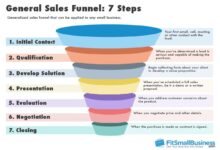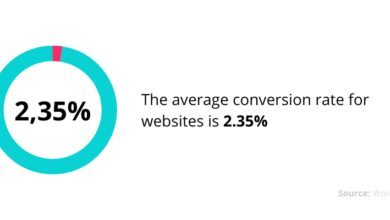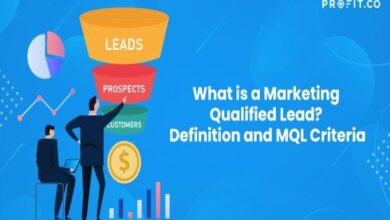Lead Nurturing: 7 Proven Strategies to Skyrocket Conversions
Lead nurturing isn’t just a marketing buzzword—it’s the secret engine behind high-converting sales pipelines. In today’s competitive landscape, turning cold leads into loyal customers requires more than just flashy ads or one-off emails. It’s about building trust, delivering value, and guiding prospects through their journey with precision and care.
What Is Lead Nurturing and Why It Matters

At its core, lead nurturing is the process of building relationships with potential customers at every stage of the buyer’s journey. It’s not about pushing a sale; it’s about providing relevant information, addressing pain points, and positioning your brand as a trusted advisor. According to HubSpot, companies that excel at lead nurturing generate 50% more sales-ready leads at a 33% lower cost.
The Psychology Behind Lead Engagement
People don’t buy products—they buy solutions to their problems. Effective lead nurturing taps into the psychological triggers that influence decision-making, such as trust, consistency, and social proof. When prospects feel understood and supported, they’re more likely to move forward in the sales funnel.
- Trust is built through consistent, valuable communication.
- Reciprocity encourages action when value is given first.
- Social proof (testimonials, case studies) reduces perceived risk.
How Lead Nurturing Fits Into the Sales Funnel
The sales funnel has three primary stages: awareness, consideration, and decision. Lead nurturing ensures that prospects are guided smoothly through each phase with tailored content and timely interactions.
- Awareness Stage: Educational content like blogs, infographics, and videos.
- Consideration Stage: Comparison guides, webinars, and product overviews.
- Decision Stage: Free trials, demos, and personalized offers.
“Nurtured leads make 47% larger purchases than non-nurtured leads.” — Annuitas Group
7 Key Strategies for Effective Lead Nurturing
Mastering lead nurturing requires a strategic blend of technology, timing, and content. Below are seven proven strategies that top-performing companies use to convert more leads and boost ROI.
1. Segment Your Audience for Personalized Outreach
One-size-fits-all messaging fails in lead nurturing. Segmentation allows you to group leads based on behavior, demographics, or engagement level, enabling hyper-relevant communication.
- Use CRM data to categorize leads by industry, job title, or purchase intent.
- Behavioral segmentation tracks email opens, website visits, and content downloads.
- Dynamic content in emails can change based on user profile or past interactions.
For example, a SaaS company might send onboarding tips to new sign-ups while offering advanced feature tutorials to long-time users. Tools like Marketo and ActiveCampaign offer robust segmentation features.
2. Automate with Drip Campaigns
Drip campaigns are a series of automated emails sent based on triggers or timelines. They keep your brand top-of-mind without overwhelming your team.
- Set up welcome sequences for new subscribers.
- Trigger follow-ups after a lead downloads a whitepaper or attends a webinar.
- Re-engage inactive leads with reactivation campaigns.
A well-designed drip campaign can increase conversion rates by up to 119%, according to Constant Contact. The key is relevance—each email should feel like a natural next step in the conversation.
3. Leverage Multi-Channel Engagement
Email alone isn’t enough. Today’s buyers interact across multiple platforms, including social media, SMS, live chat, and even direct mail.
- Use LinkedIn to share thought leadership content with B2B leads.
- Retarget website visitors with personalized ads via Facebook or Google Ads.
- Send SMS reminders for upcoming webinars or limited-time offers.
Omni-channel nurturing increases engagement by meeting leads where they already spend their time. A study by Salesforce found that companies using 3+ channels in a campaign see a 287% higher purchase rate.
4. Create Value-Driven Content Journeys
Content is the fuel of lead nurturing. But not just any content—prospects need content that answers their questions, solves their problems, and aligns with their stage in the buyer’s journey.
- Top-of-funnel: Blog posts, checklists, and explainer videos.
- Middle-of-funnel: Case studies, comparison sheets, and expert guides.
- Bottom-of-funnel: Free trials, consultations, and ROI calculators.
Map out a content journey for each persona. For instance, a marketing manager might need a step-by-step guide to improving email open rates, while a CTO might prefer a technical deep-dive into API integrations.
5. Use Behavioral Triggers to Guide Next Steps
Behavioral data tells you what leads are interested in—use it to deliver the right message at the right time.
- If a lead visits your pricing page multiple times, trigger a demo offer.
- After watching a product video, send a case study showing real-world results.
- Abandoned cart? Send a reminder with a limited-time discount.
Tools like HubSpot and Pardot allow you to set up behavior-based workflows that respond in real time.
6. Score and Prioritize Leads
Not all leads are created equal. Lead scoring assigns points based on engagement and demographic fit, helping sales teams focus on the hottest prospects.
- Positive actions: Email opens (+5), webinar attendance (+10), demo request (+25).
- Negative actions: Unsubscribes (-20), inactivity over 30 days (-10).
- Demographic fit: Job title, company size, industry alignment.
Once a lead hits a threshold (e.g., 100 points), they’re marked as sales-ready. This alignment between marketing and sales reduces friction and speeds up conversions.
7. Measure, Optimize, and Scale
Lead nurturing isn’t a “set it and forget it” strategy. Continuous optimization based on data is essential for long-term success.
- Track key metrics: Open rates, click-through rates, conversion rates, and time-to-close.
- A/B test subject lines, CTAs, and content formats.
- Use analytics to identify drop-off points and refine the journey.
According to MarketingProfs, companies that regularly optimize their nurturing campaigns see a 20-30% improvement in performance year-over-year.
The Role of Marketing Automation in Lead Nurturing
Manual follow-ups don’t scale. Marketing automation platforms are the backbone of modern lead nurturing, enabling personalized, timely, and consistent communication at scale.
Top Automation Tools for Lead Nurturing
Choosing the right tool depends on your business size, industry, and goals. Here are some of the most powerful platforms available:
- HubSpot: All-in-one CRM with intuitive workflows and email automation.
- Marketo: Enterprise-grade solution for complex B2B nurturing campaigns.
- ActiveCampaign: Combines email marketing with advanced automation and CRM.
- Pardot (by Salesforce): Ideal for B2B companies already using Salesforce CRM.
- Klaviyo: E-commerce focused, with powerful segmentation and SMS capabilities.
These platforms allow you to create dynamic workflows that respond to user behavior, ensuring no lead falls through the cracks.
How to Set Up Your First Nurturing Workflow
Getting started with automation doesn’t have to be overwhelming. Follow these steps to launch your first lead nurturing workflow:
- Define your goal: Is it to drive demo sign-ups, increase trial conversions, or boost webinar attendance?
- Identify your trigger: What action starts the workflow? (e.g., form submission, content download)
- Map the journey: Outline the sequence of emails, messages, or tasks.
- Create content: Write emails, design landing pages, and prepare CTAs.
- Test and launch: Run a small pilot, gather feedback, and optimize before scaling.
For example, a simple welcome workflow might include: Day 1 – Thank you email + onboarding guide; Day 3 – Product feature highlight; Day 7 – Customer success story; Day 10 – Call-to-action for a demo.
Common Pitfalls to Avoid in Automation
While automation is powerful, misuse can damage relationships. Avoid these common mistakes:
- Over-automation: Sending too many messages too quickly feels spammy.
- Generic content: Failing to personalize leads to low engagement.
- Ignoring opt-outs: Not respecting unsubscribe requests harms deliverability.
- No human touch: Automation should enhance, not replace, personal interaction.
Balance automation with empathy. Use it to save time on repetitive tasks, but keep the human element alive in high-value interactions.
Lead Nurturing in B2B vs. B2C Markets
The principles of lead nurturing apply to both B2B and B2C, but the execution differs significantly due to audience behavior, sales cycles, and decision-making processes.
B2B Lead Nurturing: Long Cycles, High Stakes
B2B sales cycles are longer and involve multiple stakeholders. Nurturing requires a strategic, consultative approach.
- Content should be in-depth: whitepapers, ROI calculators, and technical documentation.
- Engage with decision-makers, influencers, and end-users separately.
- Use account-based marketing (ABM) to personalize at the company level.
For example, a cybersecurity firm might nurture IT managers with threat reports, CFOs with cost-benefit analyses, and CISOs with compliance insights—all under the same campaign umbrella.
B2C Lead Nurturing: Speed, Emotion, and Urgency
B2C buyers make faster decisions, often driven by emotion and convenience. Nurturing focuses on instant gratification and frictionless experiences.
- Use urgency: “Only 3 left in stock!” or “Sale ends tonight!”
- Leverage social proof: “10,000+ customers love this product.”
- Offer instant rewards: discount codes, free shipping, or loyalty points.
E-commerce brands like Amazon excel at this by sending personalized recommendations and cart abandonment reminders within hours.
Key Differences in Metrics and KPIs
While both models track conversions, the KPIs differ:
- B2B: Lead-to-opportunity rate, average deal size, sales cycle length.
- B2C: Conversion rate, average order value, customer lifetime value (CLV).
Understanding these differences ensures you measure what truly matters for your business model.
Content Strategies That Fuel Lead Nurturing
Content is the cornerstone of any successful lead nurturing strategy. Without valuable, relevant content, even the best automation tools will fail.
Creating a Content Calendar for Nurturing Campaigns
A well-planned content calendar ensures consistency and alignment with your nurturing goals.
- Map content to each stage of the buyer’s journey.
- Schedule content releases to coincide with campaign triggers.
- Repurpose top-performing content into new formats (e.g., blog → video → infographic).
Use tools like Trello or Asana to collaborate with your team and track deadlines.
Types of Content That Convert
Not all content is equally effective in nurturing. Focus on formats that educate, engage, and inspire action.
- Email Series: Step-by-step guides delivered over time.
- Webinars: Live or on-demand sessions that showcase expertise.
- Case Studies: Real-world examples of how your solution solved a problem.
- Interactive Tools: Quizzes, calculators, and configurators that engage users.
- Video Tutorials: Short, actionable videos that demonstrate value.
According to Content Marketing Institute, 72% of marketers say educational content is the most effective for lead nurturing.
Personalization Beyond the First Name
True personalization goes beyond “Hi {First Name}.” It’s about delivering content that feels tailor-made for the individual.
- Use past behavior to recommend relevant content.
- Adjust messaging based on industry, role, or pain point.
- Dynamic email content that changes based on user data.
For example, a financial services company might show retirement planning tips to users over 50 and student loan advice to those under 30—using the same email template with personalized modules.
Measuring the Success of Your Lead Nurturing Efforts
You can’t improve what you don’t measure. Tracking the right metrics helps you understand what’s working and where to optimize.
Key Performance Indicators (KPIs) to Track
Focus on metrics that reflect engagement, progression, and conversion.
- Engagement Rate: Email open and click-through rates.
- Lead Conversion Rate: Percentage of nurtured leads that become customers.
- Time in Nurturing: How long leads stay in the program before converting.
- Revenue Attribution: How much revenue is generated from nurtured leads.
- Unsubscribe Rate: Indicates content relevance and frequency issues.
Google Analytics, CRM dashboards, and marketing automation platforms provide these insights in real time.
Using A/B Testing to Optimize Campaigns
Small changes can lead to big improvements. A/B testing allows you to experiment with different elements to find the most effective combination.
- Test subject lines: “Get Your Free Guide” vs. “How Top Marketers Boost ROI”
- Compare CTAs: “Learn More” vs. “Start My Free Trial”
- Experiment with send times: Morning vs. afternoon emails.
Run one test at a time, use a statistically significant sample size, and let results guide your decisions—not assumptions.
Reporting and Aligning with Sales Teams
Lead nurturing doesn’t exist in a vacuum. Regular reporting ensures marketing and sales are aligned.
- Share monthly reports on lead quality, conversion rates, and pipeline impact.
- Hold joint meetings to review feedback from sales reps on lead readiness.
- Adjust scoring models based on which leads actually close.
This collaboration reduces friction and increases overall revenue efficiency.
Future Trends in Lead Nurturing
The landscape of lead nurturing is evolving rapidly, driven by AI, data privacy changes, and shifting consumer expectations.
AI and Predictive Nurturing
Artificial intelligence is transforming lead nurturing by predicting the best time, channel, and message for each lead.
- AI-powered tools like Salesforce Einstein recommend next-best actions.
- Predictive lead scoring uses machine learning to identify high-intent prospects.
- Chatbots provide instant, personalized responses 24/7.
By 2025, Gartner predicts that 80% of marketing interactions will be managed by AI.
The Rise of Zero-Party Data
With third-party cookies declining, brands are turning to zero-party data—information customers willingly share.
- Use quizzes, surveys, and preference centers to collect explicit data.
- Offer value in exchange for data: personalized recommendations, exclusive content.
- Build trust by being transparent about data usage.
This shift empowers customers and improves targeting accuracy.
Hyper-Personalization at Scale
The future of lead nurturing is hyper-personalization—delivering unique experiences to thousands of individuals simultaneously.
- Dynamic content that adapts in real time based on behavior.
- Personalized video messages with custom thumbnails and voiceovers.
- AI-generated copy tailored to individual preferences.
Brands that master this will see unprecedented engagement and loyalty.
What is lead nurturing?
Lead nurturing is the process of building relationships with potential customers by providing relevant, valuable content and interactions throughout their buyer’s journey. It aims to guide prospects toward a purchase decision by addressing their needs and concerns at each stage.
How does lead nurturing increase conversions?
By delivering targeted content and timely communication, lead nurturing builds trust, educates prospects, and keeps your brand top-of-mind. This increases engagement and moves leads closer to a purchase, resulting in higher conversion rates and larger deal sizes.
What tools are best for lead nurturing?
Popular tools include HubSpot, Marketo, ActiveCampaign, Pardot, and Klaviyo. These platforms offer automation, segmentation, behavioral tracking, and analytics to streamline and optimize nurturing campaigns.
How long should a lead nurturing campaign last?
There’s no one-size-fits-all answer—it depends on your sales cycle. B2B campaigns may last weeks or months, while B2C campaigns can convert in days. The key is to continue nurturing until the lead converts or disengages.
Can small businesses benefit from lead nurturing?
Absolutely. Even with limited resources, small businesses can use simple email sequences, social media engagement, and free automation tools to nurture leads effectively and compete with larger players.
Lead nurturing is not a tactic—it’s a mindset. It’s about putting the customer at the center of your marketing strategy and guiding them with empathy, intelligence, and consistency. From segmentation and automation to AI-driven personalization, the tools and techniques available today make it easier than ever to build meaningful relationships that drive revenue. Whether you’re in B2B or B2C, the principles remain the same: listen, educate, engage, and convert. Start small, measure everything, and scale what works. The future of marketing isn’t about shouting the loudest—it’s about nurturing the deepest connections.
Further Reading:









